October 21, 2017 at 8:04 pm
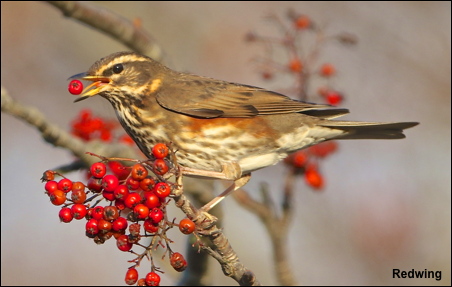
At dusk on the 2nd October I heard my first Redwing of Autumn but it took until the 19th before I found a flock of sixteen feeding on hawthorne berries. In complete contrast to last year there are very few Rowan or Hawthorne berries available to them this year so we are unlikely to see any large gatherings. Even more unlikely are visits from Waxwings and you have to say that we were spoiled by last winters phenomenal numbers of berry eating birds. The unanswered question though is how do they know from Scandinavia that we have no berries for them in Britain? Click here
The Common Snipe of last week have now moved on but on the 16th I encountered eight Jack Snipe in my local marsh, which was another autumn record. All week there have been some big movements of Pink Footed Geese and a party of eighteen Tree Sparrows was a good local sighting. The return to the garden of two Reed Buntings indicates more local bird movements.
October 15, 2017 at 6:36 pm
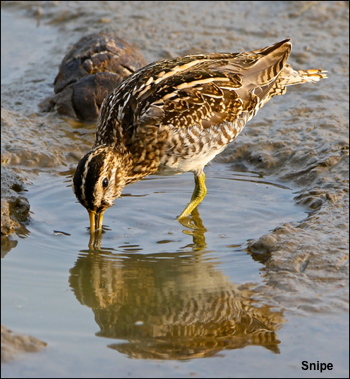
During the last ten days there has been a massive local passage of Snipe, helped no doubt by the many waterlogged fields. On the 10th in my local marsh I had a record count of seventy one Snipe and two Jack Snipe, they were the earliest I have recorded in more than fifty years! Click here
In the garden on the 4th a Wood Pigeon, had a close shave as a Peregrine flew over looking for a meal. On Hopwood a party of ten Long Tailed Tits were the first I have seen for a long time. A Peacock butterfly was still active on the 12th.
October 8, 2017 at 3:51 pm
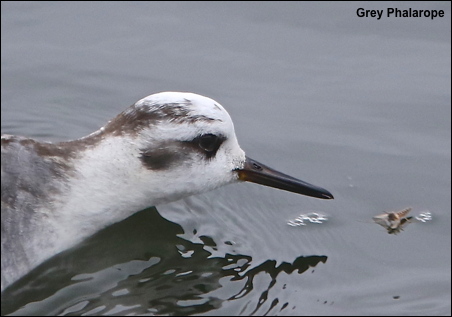
The last time I saw a Grey Phalarope it was catching flies off the surface of a pool in Spitsbergen and was only 600 miles from the North Pole. Who would have thought that one of the most iconic of Arctic birds would turn up on a reservoir in Manchester and still be feeding on flies floating on the surface! Its plumage now is totally different to the spectacular red summer breeding plumage and you would never have thought it was the same species. This weeks gallery includes photos of birds in both plumages and also shows how much brighter the female is compared to the male. Click here
September 30, 2017 at 11:41 am
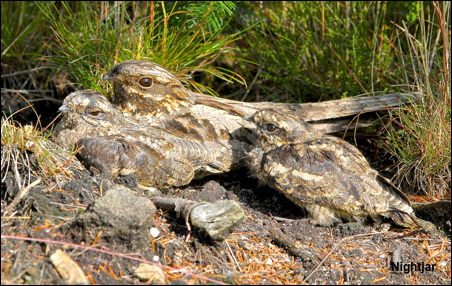
On the 2nd August 1980 I came across a female Nightjar brooding two large young on Chat Moss. In those days it was the only place in Greater Manchester where Nightjars bred and soon after, through peat extraction, Nightjars ceased to breed in the County. During the thirty seven years since 1980 very few Nightjars have been seen in Greater Manchester but this year it all changed. A pair of Nightjars have been seen all summer in the east of the County and there is every indication that they have bred. Lets hope they return next year and become regular breeding birds once again. This week’s blog photo and gallery are of a pair that bred just over the County boundary three years ago. Click here
September 23, 2017 at 8:12 pm

During the last couple of months, when darkness falls over the garden and all the feeding birds have gone to roost, other visitors begin to appear. Hedgehogs have been coming to feed below the bird feeders and have taken readily to food put out specially for them. We have had a minimum of five different Hedgehogs feeding and interacting together. It has been fascinating to sit nearby and listen to their grunts as they come into contact with each other. Hibernation time will be just around the corner. Click here
A female Hen Harrier crossing a local moorland road and nineteen Red Admiral butterflies in our Avenue have been the wildlife highlights of the week.
September 16, 2017 at 7:21 pm
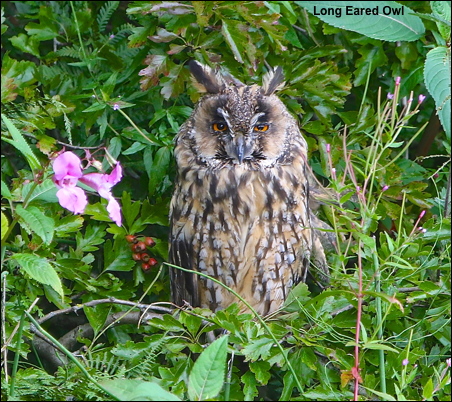
In last years blog of the 9th October there is a photo of a roosting Long Eared Owl amongst Himalayan Balsam. I came across the roosting Owl in a remote Pennine valley and never thought I would ever find one again in such vegetation. This week I walked through this valley again and there in the same vegetation was a roosting Long Eared Owl. The question of course is whether this years bird is the same one as last year for it seems a strange coincidence that another Long Eared Owl would roost this year only feet away from where last years Owl was found. Both Owls are in this years gallery for comparison. click here
During the last week Autumn migration has started with Swallows, Wheatears , Skylarks and Grey Wagtails all heading south-west and Kingfishers now returning to our local canal. An east wind will soon bring in the first autumn thrushes.







